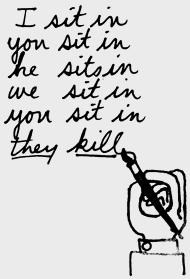April Third Movement
May 3–5, 2024
The Stanford-Area Multi-Generational Activist Reunion Included A3M Alumni and Current Students




DISTURBING THE WAR
The Inside Story of the Movement
to Get Stanford University
out of Southeast Asia
1965–1975
to Get Stanford University
out of Southeast Asia
1965–1975
by Lenny Siegel
Published by Pacific Studies Center
302 pages * Paperback ISBN: 0578803968
Available in paperback by order from your favorite bookseller and in Kindle format from Amazon.
Contents
Acknowledgments
Dedication
Preface: Telling Our Stories
Lenny Siegel wrote this book to pass down the lessons of the Stanford Movement, 1965-75.
Chapter 1: Sputnik
Lenny Siegel grows up in Southern California as an activist, primed to study physics at Stanford University.
Chapter 2: We Accuse—The Community of Technical Scholars
The author arrives at Stanford in 1966 and joins its growing anti-war Movement, as the Movement learns about Stanford’s connections to the Southeast Asian War.
Chapter 3: Feeling the Draft—Hell No!
The author organizes against Selective Service and faces it personally.
Chapter 4: Student Power
The suspension of students who protested CIA recruitment at Stanford leads to a successful May, 1968 sit-in challenging the governance of the university.
Chapter 5: Golden Spike
In the fall of 1968 Stanford SDS embarks on a well-researched campaign to get Stanford out of Southeast Asia and challenges the university’s Board of Trustees.
Chapter 6: “Research Life Not Death”—The April Third Movement
The April, 1969 occupation of the Applied Electronics Laboratory ends classified research on campus, and the Movement shuts down the Stanford Research Institute’s counterinsurgency offices for a day.
Chapter 7: Beyond SDS—Grass Roots, ROTC, and Cambodia
Activists question Stanford’s land use policies before launching demonstrations to throw the Reserve Officers Training Corps off campus. The 1969-70 academic year culminates in the nationwide student strike against President Nixon’s invasion of Cambodia.
Chapter 8: How New Is My Left—The Laos Invasion and the 70-71 Academic Year
A divided but increasingly militant Movement shouts down Ambassador Henry Cabot Lodge, Jr., demonstrates against the invasion of Laos by occupying the Stanford Computation Center, and protests war-related recruiting.
Chapter 9: The Struggles Continue—1971-72
The Movement continues to oppose war research, resists the firing of Professor Bruce Franklin, protests visits by Nixon Administration officials, and takes part in nationwide protests against Nixon’s escalation of the Vietnam War.
Chapter 10: A Lasting Legacy
The Stanford anti-war Movement continues through the end of the Vietnam War because it remains tied to the University’s role in the War, helps shape Stanford and its environs as the Community of Technical Scholars becomes known as Silicon Valley, and it evolves into a cohort of peace and justice advocates who remain active even today.
About the Author
Graphics Credits
Endnotes
